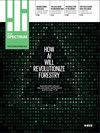摩尔定律的未来在粒子加速器中吗? 摆动的电子可为超紫外光刻技术提供动力
IF 2.6
4区 工程技术
Q2 ENGINEERING, ELECTRICAL & ELECTRONIC
引用次数: 0
摘要
英特尔、三星、台积电和日本即将成立的先进晶圆代工厂 Rapidus 都在为在每平方毫米的硅片中塞进越来越多的晶体管做着各自的准备,但它们都有一个共同点,那就是支撑它们努力的极紫外光刻(EUV)技术极其复杂、极其昂贵,而且操作成本极高。其中一个主要原因是,该系统的 13.5 纳米光源是用地球上最强大的商用激光器喷射熔融锡滴的精确而昂贵的过程。本文章由计算机程序翻译,如有差异,请以英文原文为准。
Is the Future of Moore's Law in a Particle Accelerator?: Wiggling Electrons Could Turbocharge EUV Lithography
As Intel, Samsung, TSMC, and Japan's upcoming advanced foundry Rapidus each make their separate preparations to cram more and more transistors into every square millimeter of silicon, one thing they all have in common is that the extreme ultraviolet (EUV) lithography technology underpinning their efforts is extremely complex, extremely expensive, and extremely costly to operate. A prime reason is that the source of this system's 13.5-nanometer light is the precise and costly process of blasting flying droplets of molten tin with the most powerful commercial lasers on the planet.
求助全文
通过发布文献求助,成功后即可免费获取论文全文。
去求助
来源期刊

IEEE Spectrum
工程技术-工程:电子与电气
CiteScore
2.50
自引率
0.00%
发文量
254
审稿时长
4-8 weeks
期刊介绍:
IEEE Spectrum Magazine, the flagship publication of the IEEE, explores the development, applications and implications of new technologies. It anticipates trends in engineering, science, and technology, and provides a forum for understanding, discussion and leadership in these areas.
IEEE Spectrum is the world''s leading engineering and scientific magazine. Read by over 300,000 engineers worldwide, Spectrum provides international coverage of all technical issues and advances in computers, communications, and electronics. Written in clear, concise language for the non-specialist, Spectrum''s high editorial standards and worldwide resources ensure technical accuracy and state-of-the-art relevance.
 求助内容:
求助内容: 应助结果提醒方式:
应助结果提醒方式:


